Chinese Coffee Culture | how did coffee enter China? Growth and Development of Coffee in China
For professional baristas, please follow the coffee workshop (Wechat official account cafe_style)
The history of coffee introduced into China is not long, and it was not until 1884 that coffee was first planted in Taiwan.
In the mainland, the earliest coffee cultivation began in Yunnan. At the beginning of the 20th century, French missionaries brought the first batch of coffee saplings to Binchuan County, Yunnan Province, and coffee began to be grown on the mainland.
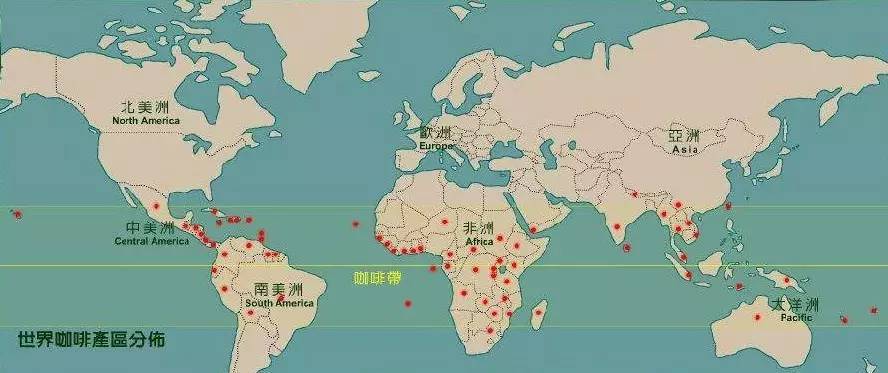
In terms of natural conditions, many parts of China are very close to Africa, Central and South America, Vietnam, Indonesia and other places, with congenital conditions for coffee cultivation. However, Chinese people have been drinking tea for thousands of years. As the origin of tea in the world, there is more or less resistance to coffee as a foreign beverage in consumption habits and concepts. Therefore, coffee cultivation has not been given enough attention for a long time after coffee was introduced into China, and the development is extremely slow.
The earliest cafe opened on the Bund.
In the 1930s, the earliest cafe in Shanghai opened on the Bund for foreign sailors to enjoy their coffee, perhaps with a sense of relieving homesickness.

Coffee at that time was called "cough potion" by Shanghainese. Of course, this is just a segment of the Shanghai Cafe. In Shanghai at that time, there were many overseas Chinese who returned from overseas. They kept the habit of drinking coffee in their lives-not just going to the cafe. More often, they taste strong coffee in their own restaurant or living room.

But activities such as coffee and afternoon tea have changed since 1949. Before the 1980s, coffee was a strange word and a strange thing for most Chinese people. Although during the Cultural Revolution, there were 3.4 yuan cans of Shanghai coffee on the shelves of Xidan Mall in Beijing. And in the 1970s, some foreign-related hotels began to have their own coffee shops, but they needed foreign exchange coupons to pay, and it was clear that they were for foreign guests-the place and price of coffee were far away from ordinary people.
The time when "instant coffee is coffee"
It was not until the 1980s that people became familiar with coffee from advertisements. Instant coffee, for most people, went through about a decade or so when they thought that "instant coffee is coffee". At that time, glass bottles containing "Nestle" or "McDonnell's" were often placed in cabinets or used as cups for owners to drink water in the office-and not just because they were thick and thick.
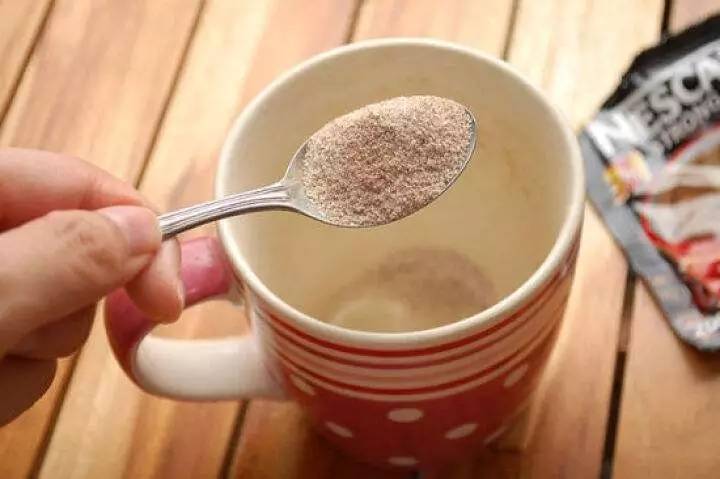
At that time, "coffee" and "instant coffee" were two interchangeable terms. Until tea restaurants such as Starbucks in the United States and Hong Kong entered, people began to realize that coffee was not instant coffee, but something else. What is it? It is a stylish, Starbucks abstract painting, jazz and aggressive coffee flavor; it is a half-tea and half-coffee drink in a teahouse, such as "Yuanyang". Served in a delicate white porcelain plate, it is served with dishes by the waiter. The former, because it is more exotic and fashionable, has become another noun for coffee after "instant coffee". Most of the signs of "coffee and language tea" appear in cafes opened by Taiwanese or Singaporeans, which originally means that they drink coffee but are full of a casual "tea attitude". The atmosphere and feeling are still old teahouse-style social performances.
The cultivation of coffee in China
Coffee in Taiwan
Taiwan is located in the subtropics, the territory is mountainous, and there is an obvious rainy season, so it is a good growing environment for coffee.
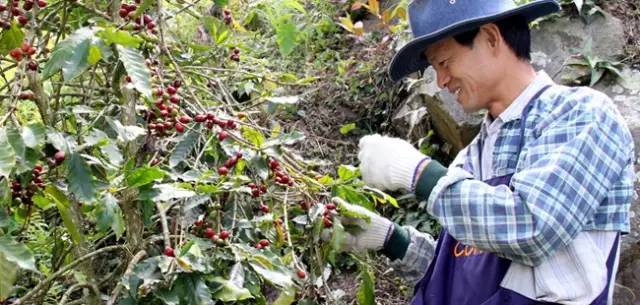
However, since the introduction of coffee trees by the British during Guang Xu's years, the planting scale has not been large. At present, there are still small-scale cultivation, including Huisun Forest Farm in Nantou Mountain area, Hebaoshan Mountain in Yunlin Gukeng, Kenting Park, Department of Horticulture at National Taiwan University, Chiayi Agricultural Experimental Institute, and Hengchun Branch of the Provincial Forestry Experimental Institute. The coffee bean flavor of Hebao Mountain is similar to that of Central and South American beans, with a soft sour taste and good texture, and the taste is balanced, while the coffee beans of Huisun Forest Farm are said to be weak in acidity.
Coffee is in Hainan
"White jade carved green leaves, coral beads United, braving the rain to see the coffee, lingering can not bear to return. The flowers often bring rain, and the smell is as strong as milk. The mountain birds call at night and pick up fallen pearls in the Ming Dynasty. " This is a "Bodhisattva Man" depicting the coffee garden. Anyone who has been to the coffee garden will applaud the author's poem. The scenery of the coffee garden on Hainan Island is charming, and the coffee produced in Hainan Island is also fragrant.
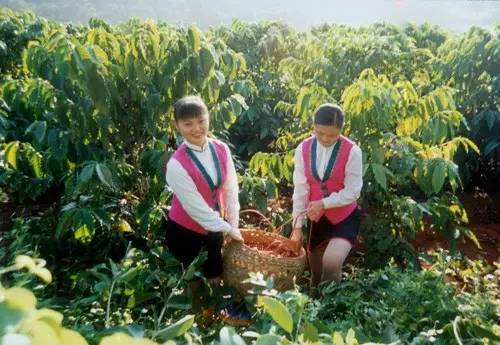
Coffee originated in tropical Africa, belongs to Rubiaceae perennial woody plants, the tree potential is not high, is a shrub or small tree type. Most of the soil in Hainan Province is latosol formed by weathering of granite and basalt, and the content of organic matter in the surface layer is 1.8%, 3.5%, which is very suitable for coffee growth. As early as 1898, overseas Chinese introduced coffee seedlings and planted them in Shilenpo Village, Nanyang Town, Wenchang City. In 1908, overseas Chinese introduced coffee and planted it near Nada Town in Jindan County. In 1935, overseas Chinese set up a Fumin Reclamation Company in Fushan Town, Chengmai County, planted coffee in a large area and began to produce commercial coffee. However, due to various reasons, Hainan coffee always has ups and downs.
The earliest coffee introduced in Hainan has been domesticated under the local conditions of Hainan, and its quality has undergone subtle changes, such as roasting and brewing, and its taste is mellow and delicious. When Comrade Zhou Enlai came to Hainan to inspect his work, he drank Xinglong coffee and praised it as a good product. The coffee technician of New York General Food Co., Ltd. came to Hainan to inspect coffee production, brought his own coffee tasting utensils, and made Hainan coffee by himself. After trying it, he thought that the taste was mellow, irritating, and more in line with the taste of the majority of users. it can be seen that Hainan coffee has formed its own unique flavor and won praise at home and abroad.
Yunnan Coffee
1. The growth and development of Yunnan coffee.
The history of coffee cultivation in Yunnan can be traced back to 1892. A French missionary brought coffee to Yunnan from abroad and successfully planted it in a valley in Binchuan County, Yunnan Province. In Binchuan County, more than 30 coffee plants of this batch of coffee seeds are still blooming and bearing fruit.
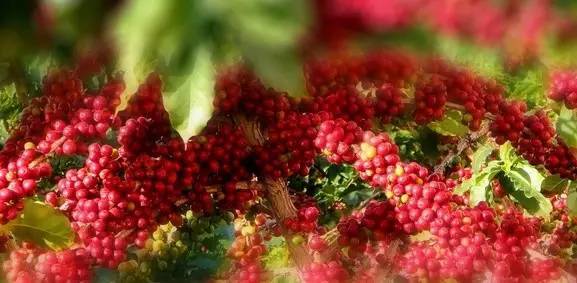
Yunnan coffee was planted on a large scale in the mid-1950s, with a planting scale of 4000 hectares at one time. By the end of 1997, the planting area of coffee in the province had reached 7800 hectares. At present, the planting area and output of the whole province account for more than 90% of the country, and Yunnan coffee has established its leading position in China. Yunnan coffee is a variant of Arabian original species, which has been cultivated for more than one hundred years after long-term cultivation and domestication.
The western and southern parts of Yunnan Province are located between 15 degrees north latitude and the Tropic of Cancer, and most of the areas are at an altitude of 1,000,000m. The topography is dominated by mountains and slopes, with large undulation, fertile soil, sufficient sunshine, rich rainfall and great temperature difference between day and night, which happens to have all kinds of conditions.
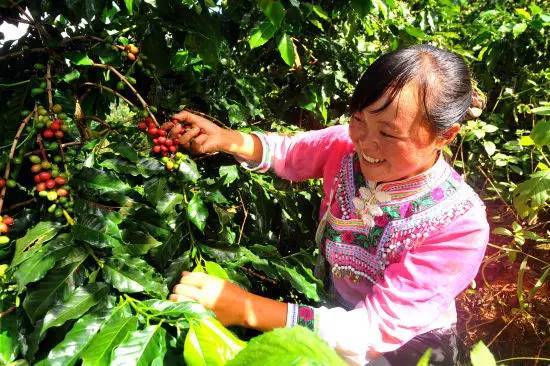
According to the determination of experts, small-grain coffee should be planted in the mountains at an altitude of 800m. If the altitude is too high, it will taste sour, and if it is too low, it will taste bitter. Yunnan coffee is mostly planted in dry and hot valleys at an altitude of 1100 meters above sea level, so it has a moderate sour taste, rich and mellow aroma. In terms of climatic conditions, the long light time in southern Yunnan is conducive to plant growth and photosynthesis, and the large temperature difference between day and night and low temperature at night are conducive to the accumulation of coffee nutrients. Therefore, the effective nutrients of Yunnan small-grain coffee is higher than that of other foreign coffee varieties. In addition, small seed coffee is easy to be infected with rust, which deeply affects the yield and quality of embroidery disease. In the hot area of Yunnan, due to the distinct dry and wet, the red ripening of fresh fruit enters the dry season every year, and the relative humidity is low, which is not conducive to the formation and growth of rust blister. Due to these unique geographical and climatic conditions, Yunnan coffee is strong but not bitter, fragrant but not strong, with a little fruit flavor.
As early as the 1950s, Yunnan small seed coffee was very popular in the international coffee market. World-class coffee experts evaluated Yunnan coffee as the best coffee in the world, and its cultivation techniques and per unit yield were also world-class. Due to the excellent quality of Yunnan coffee, Lujiang No.1 entered the London market in the 1960s and was rated as a first-class product. In recent years, coffee companies such as Starbucks and Nestl é have come to Yunnan to open up raw material bases, and the products produced in Yunnan are also gradually famous at home and abroad.
2. Coffee producing areas and main varieties in Yunnan
Yunnan coffee is mainly distributed in 11 prefectures and cities, such as Baoshan, Simao, Yuxi and Dehong.
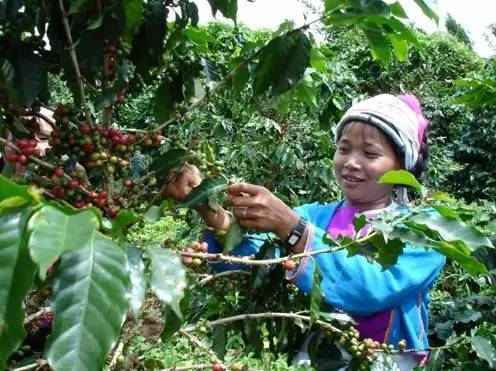
Yunnan mainly grows small-grain coffee, including "Kent S288", "iron pickup" and "bourbon". These varieties are very popular with consumers because of their good adaptability, high yield and mellow taste. Tibika and Bobang, two classic high-quality coffee varieties, are the main cultivated varieties of coffee in Yunnan, which belong to the variety of Arabian species (also known as small-grain species). Because the morphology and habits of the two varieties are similar, the two varieties are mostly mixed. The tender leaves of the top buds of bourbon are green, called green top coffee, and the top leaves of iron pickup are red copper, called red top coffee.
Important Notice :
前街咖啡 FrontStreet Coffee has moved to new addredd:
FrontStreet Coffee Address: 315,Donghua East Road,GuangZhou
Tel:020 38364473
- Prev
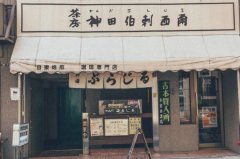
The birth of Japanese coffee culture is inseparable from the ice drop coffee that crosses the ocean.
Professional barista exchanges, please pay attention to coffee workshop (Weixin Official Accounts cafe_style ) Japanese cafes are springing up like mushrooms. They not only have various types of cafes, but also maintain the traditional dedication spirit, gradually becoming the third space for people to relax and discuss. Whether it is a hand-made appliance with both appearance and utility, or a unique baking and brewing hand
- Next
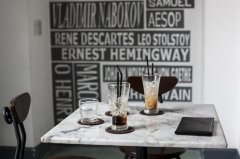
Vietnamese coffee, a classic I fell in love with as soon as I drank it.
Professional baristas Please pay attention to the traces of the French colonization of Vietnam left by the coffee workshop (official Wechat account cafe_style). It is not just the French bread and pt used in Vietnamese sandwiches. Vietnamese coffee, which many people are flocking to, is another classic. Serious Eats reports that the French planted a large number of coffee trees in Vietnam in the 19th century. Although it is planted at higher altitude
Related
- How did the Salvadoran coffee industry develop in Central America?
- What exactly does the golden cup extraction of coffee mean?
- The Origin of Coffee flower
- [2023 Starbucks World Earth Day] there are more meaningful things besides free Starbucks coffee!
- What kind of coffee is there in Spain? 9 Flavors of Spanish Coffee
- Aromatic African coffee| Kenya's coffee culture and historical production area
- Liberica Coffee Bean knowledge: the characteristics of Liberian Coffee beans of the three original species of Coffee beans
- The origin and formula of Spanish latte introduces the taste characteristics of Bombon coffee in Valencia, Spain.
- How to adjust the solution of over-extracted coffee
- What is the tasting period of coffee beans? What is the period of coffee and beans? How should coffee wake up and raise beans?

